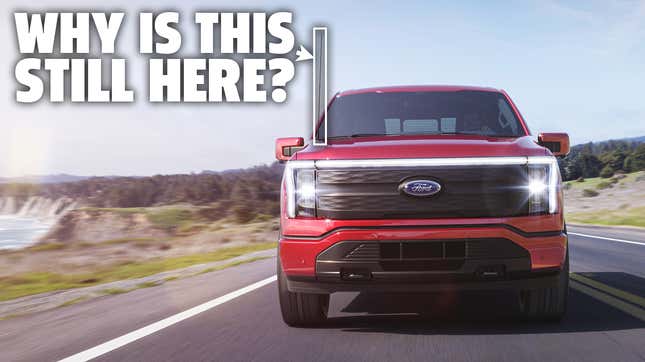
We did a lot of talking about Ford’s new all-electric F-150 Lightning last week, as that’s a Big Deal in the automotive world — you read the articles, you know the deal. One thing I’m not sure you did notice, though, is that on this very new, cutting-edge tech truck, there was one strange, archaic-looking detail: that huge old whip-type radio antenna. Those have been abandoned by most cars for years, yet they still show up on trucks, including the absolute latest ones. Why? What’s going on here?
I mean, look at the other cars in Ford’s fleet, like their still newish EV, the Mustang Mach-e:
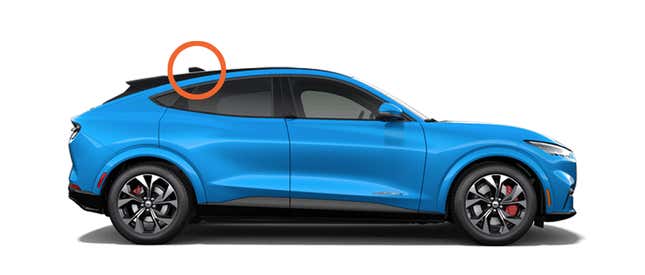
Like the vast majority of new cars, the Mach-e doesn’t use some long metal stick for an antenna, but rather uses one of these little sleek shark-fin dealies.
Ford’s F-150 truck lineup, though, including both the Lightning, and the new Bronco, all use the old-school whip antennae:
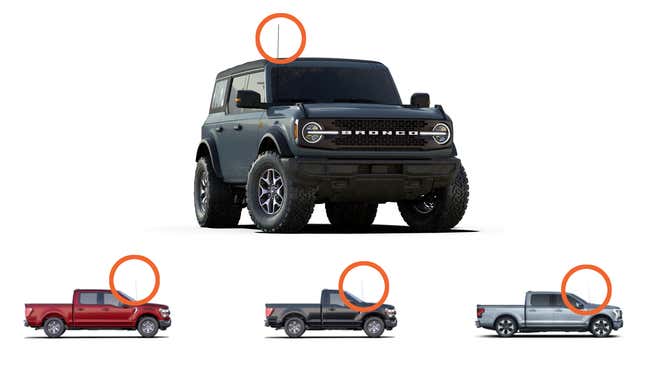
It’s not like this is because of some legal requirement; if they wanted to use a more modern antenna design on a full-sized truck, they absolutely could. Chevy does, after all:
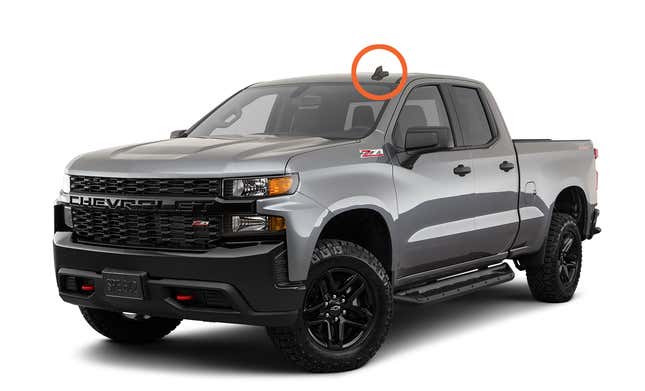
I should mention that whip antennas are still available on Chevys, it seems. But Ram seems to have embraced the fin:
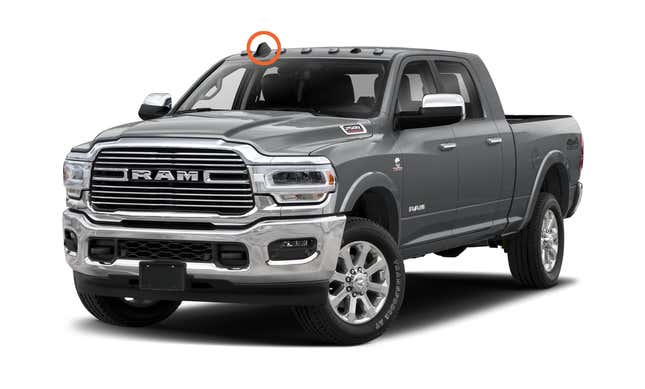
Though I bet Ram likes those just to fill out all those studded lights above the windshield.
So, they could use a shark fin, if they really wanted to. I don’t think it’s a cost issue, as if so, we’d see old-school whip antennae on the cheapest cars you can buy, and that’s not the case:

Two of the cheapest cars you can buy new in America, the Chevy Spark and the Mitsubishi Mirage, both use those roof-mounted little rubberized short antennae, so I don’t think the whip antenna is really cheaper, otherwise I’d think cars like these would use them.
Plus, most modern shark fin antennae include antennae for GPS and cell service as well integrated into the same little unit.
So, again, why is Ford sticking with something that seems so archaic?
The answer, it seems, is both technical and demographic.
I’ve covered the tech behind car radio antennae before, and you may recall that the reason old-school car antennas (both plurals are acceptable, I’m just mixing it up) were as long as they were is because they work best if they’re a specific fraction of the wavelength they’re trying to pick up — and in the case of FM radio, that comes to about 1/4 wavelength, or 31 inches.
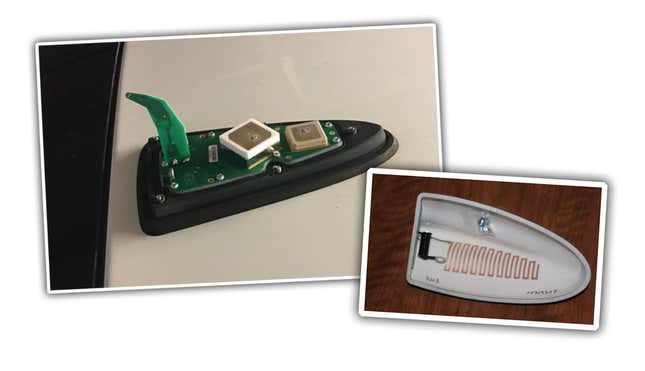
Those shark fin and short, stumpy antennae have little coils of wire inside them to get to the proper length, but the truth is they’re actually less optimal for picking up FM signals, and significantly worse at picking up amplitude-modulated (AM) radio signals. They’re known as “electrically small antennas” and they have well-known and understood limitations.
Now, for most modern car buyers, less-than-optimal FM isn’t really a deal breaker (it’s generally good enough) and picking up AM is just not something most SUV or car buyers care about much at all.
Truck drivers, Ford has found, are different.
In talking to Mike Levine, Ford’s Product Communications Manager, he summed up why Ford still uses the old whips like this:
The mast antenna supports the AM/FM performance best over other design options. Rural AM FTW!
I think the “rural AM” bit is the key here — if there’s a type of broadcast more likely to be consumed by F-150 buyers than mainstream SUV/passenger car buyers, it’s rural AM stations. This must be important enough that Ford is willing to keep putting old whip antennas on their trucks, even if it means they don’t get to just dip into the parts bin for a shark fin antenna, and they have to place GPS/cell antennae in another unit somewhere.
While I can’t see the appeal of AM since Art Bell died, I’ll take Ford’s word that lots of their customers seem to still demand it. And, incredibly, even with all of the remarkable technical advancements made in the past decades, the best way to still get FM/AM radio in a car is with a tall, thin, whippy metal stick.